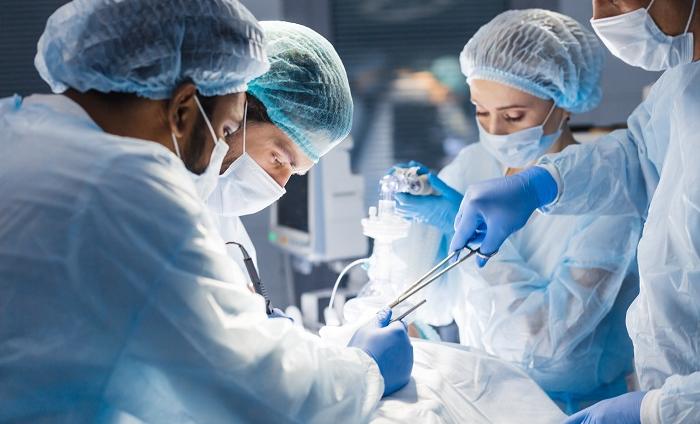In Focus: A growing need for surgical medical devices in China
Growing Demand for Surgical Devices
According to data from World Population Prospects: the 2019 Revision, by 2050, one in six people in the world will be over age 65 (16%), up from one in eleven in 2019 (9%). This significant increase in the growing ageing population worldwide is also accompanied by an increasing prevalence and incidence of chronic diseases. With early screening and detection of these diseases, this has led to a rising number of surgical procedures, which has naturally driven up demand for surgical instruments.
This knock-on effect has also propelled R&D investments to make available technologically advanced products, medical robotics and computer-assisted surgical devices, all of which are projected to grow at a CAGR of 9.9% from 2019 to 2026. The global market size for surgical devices now is expected to grow from USD 15.99 billion in 2019 to USD 28.4 billion in 2027 at a CAGR of 7.4%.
Zooming in on the China market, there are approximately a total of 50 million surgical procedures conducted in 2018. China’s market for general surgical devices is expected to grow from RMB 15.7 million in 2020 to RMB 23.7 million in 2023.
Surgical Device Trends in China
China’s policy reform of volume-based procurement for high-value consumables has been rolled out in some provinces, such as ultrasonic scalpels in Fujian and open surgical staplers in Sichuan and Hunan. Alongside it, the government has imposed a price-ceiling for surgical consumables. These measures have resulted in an acceleration to adopt lower-priced domestic products over overseas brands, as well as, integration of parties in the sales value chain to reduce costs.
Adding to this, hospitals in China have implemented stricter infection control, especially towards the reusability of single-piece-use products and the sterilisation of reusable products, further driving up demand for the market.
With a new generation of younger physicians and the relative matureness of this market segment, product innovation is now on the uptrend to develop differentiation and capture bigger market share among hospitals.
Upcoming Innovation Trends in General Surgery
Minimally invasive surgeries: Driven by the need for more consistent, precise and safer surgical procedures, laparoscopic use is expected to increase. This is driven by factors such as aesthetic advantages for patients and demand for minimally invasive procedures. At the same time, conventional laparoscopic procedures have evolved towards more adoption of single-incision and natural orifice transluminal endoscopic procedures. Instead of resection, both patients and clinicians are turning to minimally invasive techniques (e.g., Ablation of tumours) as an alternative treatment.
New surgical devices such as multi-modal, advanced devices and energy-directed surgical instruments are another trend. Multi-modal devices combine several functions into a single device – examples include endoscopic devices with combined needle, cutter and coagulation device, and trocars with suturing capabilities for internal incision closure. Energy-direct instruments are fast replacing conventional ones such as scalpels or clamps due to their ability to use other forms of energy (i.e., radiofrequency cutting or microwave coagulation) for more precision and targeted action.
Surgical robots offer better precision and consistency than surgeons in repetitive surgical scenarios such as suturing. Other advantages of surgical robots include lesser pain and faster patient recovery time. Future trends in surgical robots include miniaturisation of robots and instruments. This will allow for smaller incisions that can significantly reduce tissue damage and visible scarring.
Live Diagnostics/Smart Surgical Instruments with tissue sensors or conducts in-situ blood or tissue analysis in real-time during surgeries allow for improved surgical resection margins and could possibly be incorporated into existing surgical instruments or drive the development of new surgical instruments.
Computer-assisted surgical devices such as augmented reality and mixed reality offer surgeons enhanced visualization capabilities and depth perception. This is evident from the rapid introduction of image-guided vascular and endoscopic access technologies to the clinical practice. Image-guided surgery could be established as the new standard of care in general surgery in the near future.
Watch This Space
With increasing need and demand for surgical devices, Genesis is moving swiftly to fill the gaps in meeting market needs. Currently, we are the second-largest local player in the endoscopic stapler product category and one of the top local three companies in the ultrasonic scalpel product category.
With more than 60 experienced surgical R&D staff and investing more than 15% of our revenue into R&D, we are on track to develop innovative products for the surgical space. Powered by our sprawling distribution network, we will be able to bring quality surgical innovation and consumables to more than 4000 hospitals in China.
PARTNERSHIPS CAN CHANGE AND SAVE LIVES.
Read about our partnership models.

